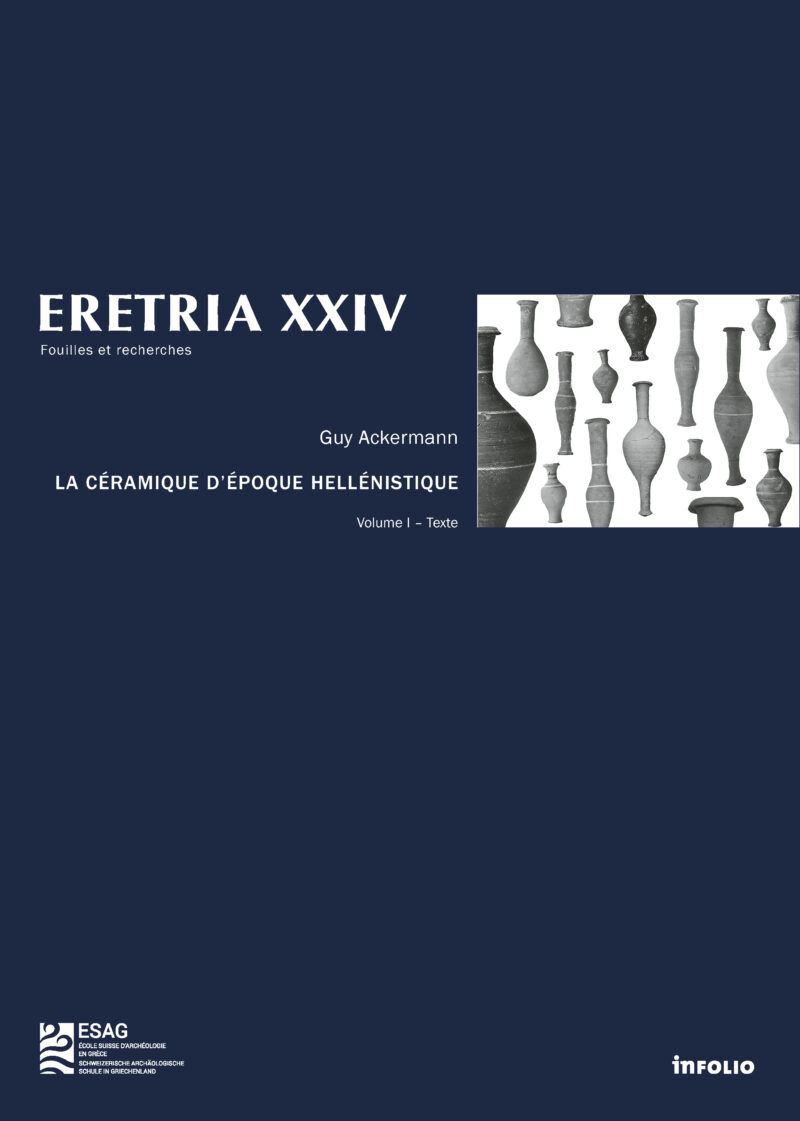ERETRIA XXIV
Guy Ackermann, La céramique d’époque hellénistique. Une chrono-typologie au service de l’histoire d’une ville grecque entre la fin du IVe et le Ier siècle av. J.-C.
With its sanctuaries, public monuments, residential areas and fortifications, Eretria is one of the most thoroughly explored cities in the ancient Greek world. Since the end of the 19th century, excavations have brought to light numerous remains, in particular an abundant pottery of the Hellenistic period, which is the focus of this study.
The author has revisited a number of closed contexts dated from the end of the 4th to the middle of the 1st century B.C. He proposes a chrono-typology of the ceramic repertoire in use in Eretria during the Hellenistic period.
The comparative analysis of local production and imports allows a better understanding of the economy of the city. The Eretrian market is characterised both by self-sufficiency, with local workshops meeting the bulk of the population’s demand, and by its insertion into the trade networks. The potters quickly adopted the innovations coming first from Athens and Macedonia, then from Asia Minor and the East.
A reviewed chronology of closed contexts (destruction layers, filling of wells and pits, monetary treasures) allows the author to propose a new history of the city and its progressive decline: to a densely populated settlement until the middle or second half of the 3rd c., it evolved into a sparse dwelling with large stretch of the urban area left in ruins before the occupation moved on the acropolis in the middle of the 1st c. BC. Several residential quarters were severely damaged in the middle of the 3rd century and in 86 BC, but the sieges of 267 and 198 BC were clearly not as devastating as has been claimed so far.
2020, 2 vol. of 264 and 272 pages in French with abstracts in French, German, English and Greek, Paperback, 22x30cm, numerous color illustrations and plans. ESAG & Infolio co-publishers.
ISBN 978-2-88474-413-3 (print)
ISBN 978-2-88474-347-1 (digital)
DOI 10.5281/zenodo.4966961
About the author
Guy Ackermann holds a PhD degree from Lausanne University and is currently a member of the French School of Athens with a fellowship of the Swiss National Science Foundation. He directed the excavation of the Gymnasium in Eretria (2015–2019) and co-authored the recently published volume on the Roman Baths in Eretria (Eretria XXV, 2020).
Guy.Ackermann@efa.gr
Content and abstract
